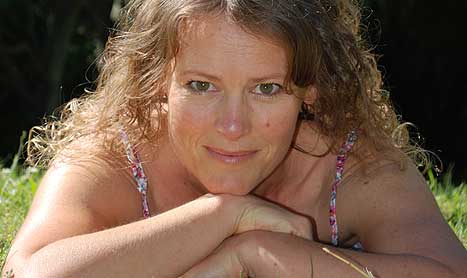
Waking up at 3am, paralysed down the right side of her body and unable to speak, Susan Kitson was rushed to hospital. Following a devastating diagnosis of multiple sclerosis one week later, she embarked upon a journey to regain her health. Over the next five years she experimented with different approaches to nutrition and exercise, and trialled many foods and different ways of living.
Discarding what didn’t help and improving upon what did, Susan wrote a book – In Search of Health – containing her findings; her practical and achievable 21 Steps to Glowing Health. We asked Susan how her journey has affected her approach to health, wellbeing and fitness:
How did your diagnosis change the way you approach your own health and fitness?
It completely altered the way I approach everything in my life. Going right back to the drawing board, learning how to walk again was soon replaced by learning how to eat, cook, think and exercise. The only ‘negative’ Amazon review my book has had said, “Unless you are looking for a total change of lifestyle and diet, leave this book alone. I found it to be too much for me.” Well, being paralysed was too much for me. As the way I had been living didn’t promote health in my body, even though I had been training for a duathlon and ate unprocessed NZ staple foods when I became ill, then I obviously needed a completely fresh start.
Has it had any effect on the way your family live their lives?
Yes and no. I was always anti-refined sugar products for children, so that hasn’t changed, but my family now eat more brown and red rice and I also throw in a vegetarian meal for them occasionally. Falafels are the current favourite – made from scratch from dried, soaked and sprouted chick peas.
What do you do nowadays to keep fit?
Yoga, yoga and more yoga! I also walk in the hilly farmland near our home regularly. During the week my alarm goes off before 6am, so that I can maximise my time on the yoga mat before getting the kids up and heading to work and school. As a family we also attend trail bike rides in the weekends – keeping control of a motorbike that is heavier than I am, on rough terrain, is a great way to keep in shape.
What’s your basic philosophy on nutrition and diets?
Eat fresh food grown locally, don’t eat too much, and eat what is right for you. There is no one approach that will suit everyone, in my book In Search of Health I advocate trying some of the steps, keeping what works and discarding what doesn’t. Some steps you may be ready for now, others next month, next year, and some never. We are each completely unique and should trust our bodies to tell us what works and what doesn’t.
Which of the 21 steps in your book did you find the most benefit from and why?
All of the steps are so intertwined in my life, it is impossible to pick the best. One thing that stands out as being important to physical health, and sits across many of my steps is to eat real food: fruit and veges that are grown locally (preferably spray free), whole grains like brown rice, quinoa, millet, rye, and spelt, and seeds and nuts.
What’s your favourite yoga pose and why?
I’m going with an old favourite for this: Down Dog (Adho Mukha Svanasana). There is a reason it is practiced so often in a yoga class; it works almost every part of the body, brings balance and strength, and can be practiced by total beginners but also has enough complexity to challenge advanced yogis.
If you could give your ‘old self’ (pre diagnosis) one piece of advice, what would it be?
Listen to your body. Once I learnt to listen, it became so much easier to know what worked for me and to make the right decision day after day, meal after meal. It also allowed me to trust myself enough to try approaches that seemed scary, or that went against conventional philosophy. Just because everybody appears to be living/eating a certain way, doesn’t mean it is right for you.
Image / Supplied

